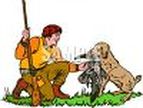WHAT DRIVES YOUR DOG
.

All dogs are born with INSTINCTUAL behaviors to help them be successful in the natural world. They learn slowly as they begin to move around what tools nature supplied to get what they want out of life. Remember always, D.D.W.W; Dogs Do What Works. If they try a behavior or to solve a problem and it results in interaction, exploration, food, play, petting or anything the dog regards as a reward and/or success that behavior will most likely be repeated. It is our job as LEADERS to provide for and educate our dogs. We make a commitment when we adopt, buy or breed a puppy that we will provide an education of how to survive in the world by conditioning DEFAULT behaviors to be successful living in a human world. It is your job to teach your dog what behavior you do want rather than scolding them when they perform a natural dog behavior you don’t like.
Dog Drives- every dog has “drives”. Some dogs have very strong natural drives, and having an understanding of these can help you with training and knowing why your dog does certain behaviors. Four natural drives that all dogs have are, pack, prey, food and defense drive. Certain breeds have more characteristics of each drive, for example herding breeds like cattle dogs and shepherds have tons of prey drive but are more aloof because they have much lower pack drive. Where Labrador retrievers have more food and pack drive than a lot of breeds.
Pack Drive- dogs are social animals and do best living within a pack environment rather than solitary. Science tells us that they descend from wolves and by nature they automatically are conditioned to social environments with pack hierarchy. Certain breeds are more bitable and love to be pet, acknowledged and interacted with on a regular basis. Dogs will naturally find their place in the pack, you are the top of your pack and our dogs are the very bottom. It is easy and enjoyable to be at the bottom. All you have to worry about is being cute and furry. Being a calm and effective leader is the best way to strengthen your pack dynamics.
Prey Drive- something moved, chase it! Lots of dogs use prey drive on a daily basis. Most dogs don’t hunt for their food so prey drive is mostly practiced through play. Chase games, fetch, tug, herd the children and other dogs are all places your dog may practice its prey drive. Herding breeds and sight hounds to name a few have very strong prey drive. Use these instincts nature gave your pooch to exercise and play with your dog. See if you can make a prey item game to play with your dog (think giant cat toy).
Food Drive- all dogs must eat to survive. Luckily for them we provide food and they don’t have to hunt or scavenge (but that doesn’t mean they won’t). Build your dog’s food drive and use it to shape and build behaviors or reward and strengthen already existing behaviors. Dogs whom are free fed usually don’t have a ton of food drive because they have it all the time. Anything we get in excess losses it’s value. Make your dog earn it! Food and play are their paycheck for working for us and having manners, remember Nothing In Life Is Free. If your dog get’s everything it wants without work, it has no purpose.
Defense Drive- This is the most important drive your dog has to keep them alive and in good health. Defense drive keeps dogs on their toes and help them to deal with any new stress that they encounter. This occurs when something new comes into the territory (or they enter a different territory) and they choose from the five F’s. Flight, Fight. Freeze, Faint or Fool around. Depending on their socialization and the physical options available to them (like being on leash). Often we see dogs becoming “aggressive” on leash because they are in a artificial position of leadership (out in front) and they cannot run away or flee.
This article is copyrighted and remains the property of the author. Individuals are welcome to print or copy same for their own use in furthering their knowledge of dogs. However, no reproductions or alterations/variations are allowed without the express written consent of the author.
